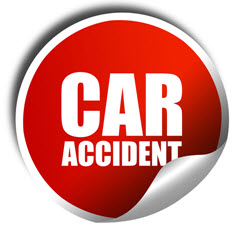Because there is no BAC breath test for drug use, and because police officers rarely bother to obtain search warrants for blood draws, almost all drugged driving prosecutions are based on circumstantial evidence. For similar reasons, these cases are more difficult to win in civil court as well, largely because the negligence per se (negligence “as such”) shortcut may not be available.
Fortunately, the burden of proof in civil court (more likely than not) is much lower than the criminal court standard (beyond a reasonable doubt). For this reason, serious injury victims usually have legal options to obtain compensation for both tangible and intangible damages.
First Party Liability
In Florida and elsewhere, establishing legal responsibility for drugged driving cases is basically a two-step process.
First, victim/plaintiffs must prove that the tortfeasors (negligent drivers) were under the influence of an artificial substance. The source could be a non-legal street drug, like heroin or methamphetamines. Much more often, however, the substance is a prescription drug, most likely Oxycontin or other opiate painkiller. These drugs create some third-party liability issues, as outlined below. In some cases, drivers are under the influence of over-the-counter drugs. In the summer of 2015, Solano County, California prosecutors charged a man with DUI because he was under the influence of caffeine. After a protracted legal fight, prosecutors ultimately dismissed the case, but the fact that they filed charges underscores the reality that any drug can potentially cause a car crash.
In addition to physical symptoms like glassy eyes or an unsteady gait (Solano County officers said the man they arrested was “very amped up, very agitated, [and] very combative”), there may be open pill bottles in the passenger area or other drug paraphernalia. But the best evidence usually comes from field sobriety tests, such as the:
- Heel-to-toe walk,
- One leg stand,
- Finger-to-nose test, and
- Horizontal Gaze Nystagmus test.
In addition to evidence of impairment, field tests are evidence of dangerous impairment, which is the second element in drugged driving cases. Solano County prosecutors may have dropped the caffeine case because there is almost no evidence suggesting that “amped up” drivers are dangerous drivers. Marijuana is a good example as well, because the evidence is mixed as to whether or not drivers who use marijuana are dangerous; there is even some evidence that since marijuana users are well aware that they are “high,” they may drive more carefully than normal.
Third Party Liability
Just like owners who negligently entrust their vehicles to incompetent drivers, persons who enable drug use by connecting people with drug dealers, providing a place to use drugs, or allowing other people to consume their leftover pain pills could be liable for damages. Similarly, there are plenty of doctors in Florida who are willing to prescribe opiate pain relievers without asking any questions.
Drug manufacturers may be liable for damages as well. In a case that may start a national trend, the city of Everett, Washington recently sued Purdue Pharma, claiming that the Oxycontin maker was indirectly responsible for the epidemic of overdose deaths in that Seattle suburb.
Contact Aggressive Attorneys
The tortfeasor (negligent driver) is usually not the only responsible party in drugged driving cases. For a free consultation with an aggressive personal injury lawyer in Brandon, contact Reed & Reed. Home and hospital visits are available. From our office in Brandon, Reed & Reed helps clients in Tampa, New Tampa, Plant City, East Hillsborough County and throughout the state of Florida.
Resources:
latimes.com/local/lanow/la-me-oxycontin-lawsuit-20170118-story.html
thefix.com/man-charged-dui-after-testing-positive-caffeine-gets-justice

